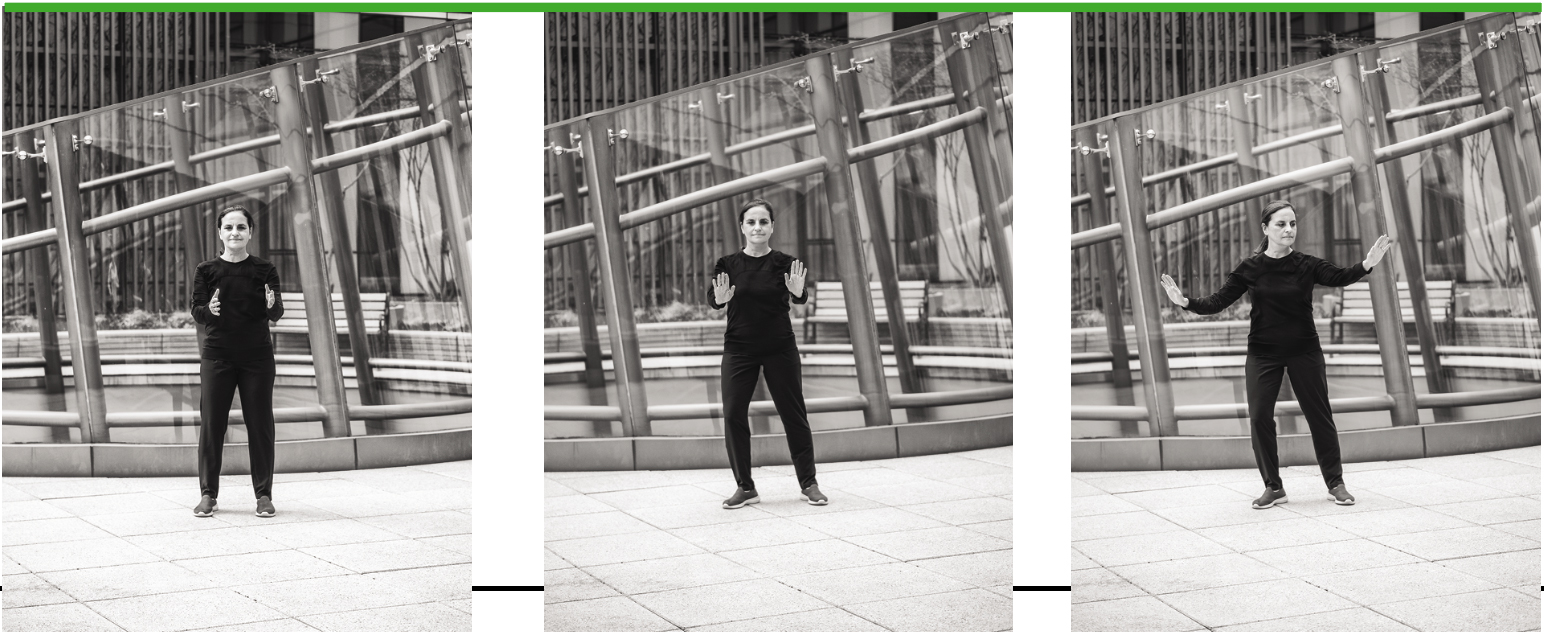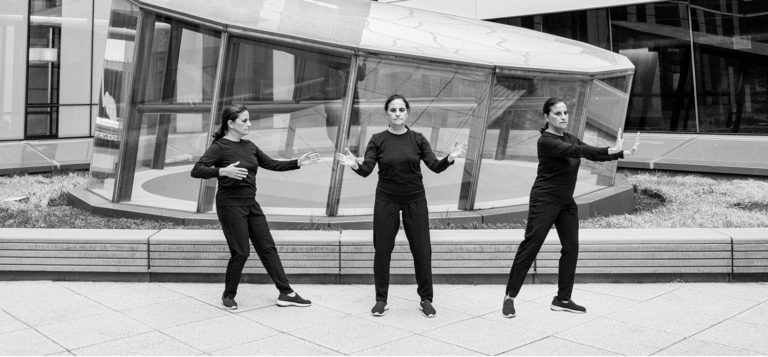
Anne is a journalist, Zendou martial artist and former bike racer who enjoys training, coaching, writing, and good craft beer.
Tai chi’s gentle postures benefit body and mind
Petra Lopez-Garcia kept thinking about her approaching 80th birthday. As the milestone neared, the South Side resident searched for a way to keep active as she embarked on her next decade. While she had tried yoga, she wanted an activity that would be gentler on her arthritic knees and hips.
She found a perfect match in tai chi, a series of slow movements that is ideal for older adults because it allows them to move their body and joints in a gentle, safe, low-impact way. Tai chi’s fluid movements, she says, “helped me feel less stiff, more flexible, and I had an easier time using the stairs and getting in and out of a chair.”
Lopez-Garcia has been taking a tai chi class — virtual during the pandemic — through Rush University Medical Center’s Rush Generations program, a free health management program for older adults.
Developed hundreds of years ago in China, tai chi’s graceful, gentle postures slowly flow from one to the next. Deep breathing is coordinated with the movements, and the emphasis is on balance, focus, and flow.
Benefits for older adults
Tai chi’s physical and mental health benefits, according to the Mayo Clinic, include decreased stress, anxiety, and depression; increased energy and stamina; and improved flexibility, balance, and muscle strength.
Carmen Perez-Stoppert, 60, takes tai chi classes at the Weiss Initiative Serving our Elders (WISE) program at Weiss Memorial Hospital. She had been physically active, but after a job loss and the death of her mother, she was having anxiety attacks.
“I was looking for a sense of peace,” says Perez-Stoppert.
She found it through tai chi. “The more I went, the more I felt that I needed it. It helped me to just be there, breathe, focus, and forget about everything else.”
Tai chi, says Weiss teacher Lin Shook, is nurturing and calming. “It gives you a sense of incredible ease, both mentally and physically.”
Evidence-based programs
There are many styles of tai chi, some more gentle than others. Rush University Medical Center social worker Jeaneane Quinn teaches Tai Chi for Arthritis and Fall Prevention, an evidence- based program created by Paul Lam, MBBS, a physician and expert on tai chi for health.
Studies on Lam’s tai chi program (as well as some other tai chi programs) have shown that the class improves body posture, reduces stress, promotes muscle strength, supports joints, and enhances flexibility.
“If we can keep moving safely as we age and find new ways to exercise and support our bodies, there are many health benefits,” Quinn says. “It’s also been shown that people who practice tai chi regularly experience less depression.”
The mindfulness component of tai chi brings awareness to how you move and your posture, with a focus on safety and listening to one’s body, Quinn says. “There are pretty phenomenal benefits.”
Tai Chi Postures for Arthritis and Fall Prevention
Jeaneane Quinn demonstrates tai chi for arthritis and fall prevention. Photos by Marc Perlish
Start these postures by standing square, feet hip-width apart, hands at your sides in a relaxed, natural posture. Keep your knees and elbows soft to avoid overextending the joints, and let the postures flow as part of a continuous movement. Use a chair or wall for support if you have difficulty balancing. Repeat each posture three times on each side.
Neck Warm-Up
Raise both hands chest high, turn your left hand so the palm is facing you, and push your right hand down near your hip, palm facing the floor. Look at your left palm. Move your left hand to the left, turning your head slowly to the left, then come back to face the front. Switch hands and repeat with your right hand. The movement comes from your arms, while your core stays still.

Spine Warm-Up
Hold your hands in front of you as though you are carrying a large beach ball, with your left hand near your chest and your right hand near your waist, palms facing each other. With your knees slightly bent, turn your upper body to the left, holding the beach ball form as you turn. When you reach the left side, switch hands and let your right palm rise above the left. Then gently turn to your right side, keeping your hips still. Rotate your hands again and return to center.

Single Whip
Raise your hands chest high, elbows toward your waist, palms facing each other. With your right foot, step slightly to the right and forward, landing with your heel then your toes. Shift weight to your right leg and softly push your hands forward in front of your body, palms facing out and away from you, as if reaching out to a windowsill. Extend your arms out to the side without locking them, opening to your left and gently turning to gaze over your left hand. Return to center and repeat on the other side.







